- Author Jason Gerald [email protected].
- Public 2023-12-16 10:50.
- Last modified 2025-01-23 12:04.
An aquarium is an additional decoration that beautifies any room and creates a lively focal point, as well as being a source of refreshment and amusement to the eye. Read the guide below to learn the steps for setting up a tropical freshwater aquarium. You will be satisfied with the process and results, and get your own “Sea World”.
Step

Step 1. Choose an aquarium location
Before getting an aquarium, don't forget that it needs to be placed on an object that can support its total weight.

Step 2. Also consider the temperature where the aquarium will be placed
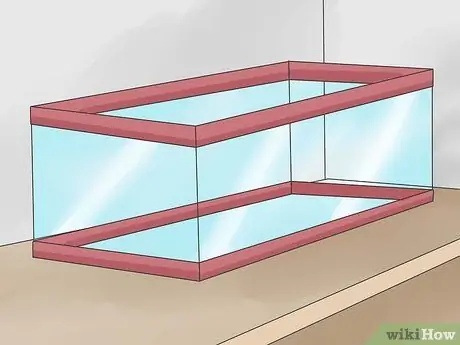
Step 3. Prepare the aquarium
Place the tank firmly in its new place, and if possible check for evenness. Don't forget, unless the tank is very small, you shouldn't move the aquarium when it's full. If you try, the risk of an accident will be very large.
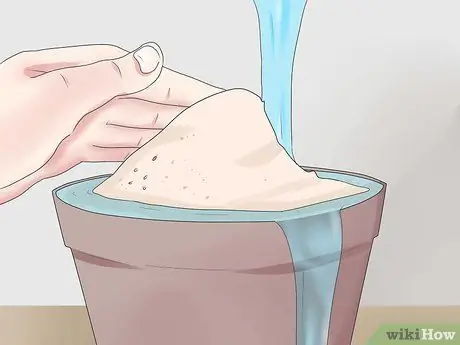
Step 4. Clean the gravel/substrate
If you plan to use live plants, try to find out what type of substrate works best. Don't forget, some fish have special substrate/gravel needs in their environment. You will need approximately 250 g of gravel per liter of tank (depending on aquarium setup). The aquarium should have enough gravel because this is where the good bacteria grow (to be discussed later). Remove dust and dirt from the gravel before adding it to the aquarium tank. If you are using a filtration system under gravel, we recommend installing it now. Spoon the gravel into the tank slowly so it doesn't scratch the glass. It's generally a good idea to create a gravel ramp at the bottom of the tank; the highest part is at the back, and the lowest part is at the front.

Step 5. Add water to the aquarium
Place a clean small plate on the gravel floor of the aquarium, and pour water over this plate to prevent the gravel from sliding. If you're still inexperienced, it's best to just use tap water.

Step 6. Enter the dechlorinator
A dechlorinator is a liquid that changes your tap water to make it safe for fish to live in because it removes chlorine from the water. A good brand of dechlorinator also removes chlorine, ammonia, and nitrates. Make sure you follow the instructions for use on the packaging.
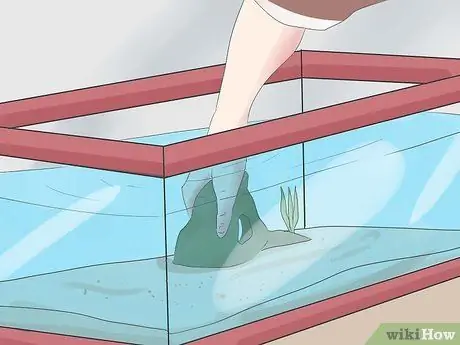
Step 7. Add decorations
Don't forget to only use decorations that are safe for freshwater aquariums. Not all types of stone are safe for freshwater fish. Ask the staff of the ornamental fish shop in your area for advice. Consider the species of fish you want to keep because different fish and different decorations can be used.

Step 8. Install the filter
Every filter is different so make sure you follow the given usage guide. Once installed properly, you can connect it and make sure the device is working properly. If you're using a small can-type filter, consider installing a spray bar to raise the water's surface. This helps dissolve oxygen for your fish. All types of filters should be able to disperse water.
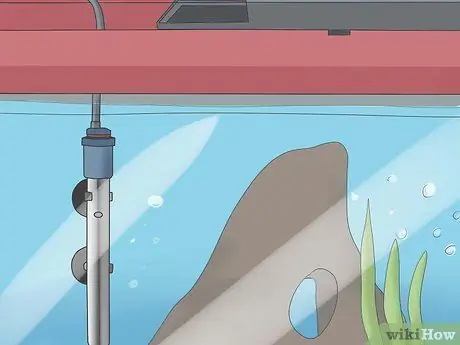
Step 9. Put the heater into the tank
Follow the heater usage guide carefully! Some aquarium heaters can be submerged, some are not. Wait at least 30 minutes before plugging the heating power cord into the electrical socket! Otherwise, you may destroy the heater due to thermal inversion. Set the heater to the appropriate temperature. You may need to tweak it a bit, depending on the heater model.
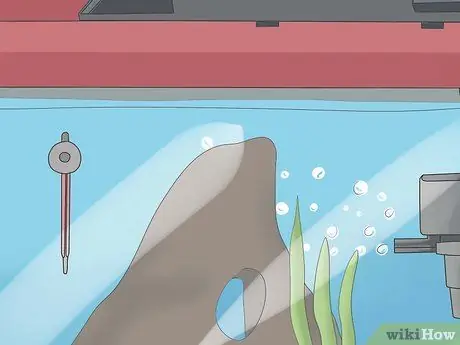
Step 10. Place the thermometer in/above the tank
Ideally, most freshwater fish like a constant temperature between 24-28 degrees Celsius. Study the fish species to be kept to determine the water temperature needed to survive.
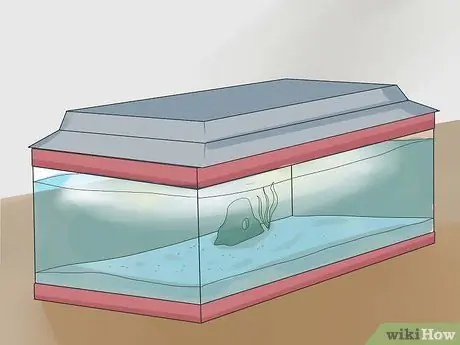
Step 11. Place the roof and aquarium lights over the tank
Be aware that lights do not harm most freshwater fish, but more research is needed if you are using live plants in your aquarium. Live plants need more than standard lighting. Many aquarium owners benefit from installing a light timer.
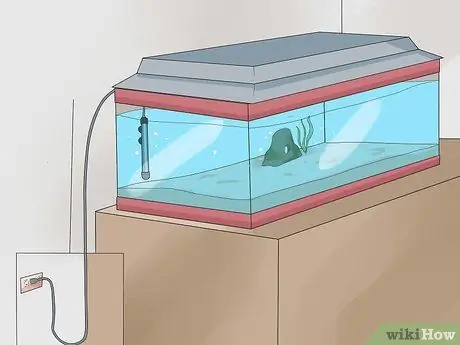
Step 12. Make sure all cables have drip-loop
The drip-loop is a U-shaped cable so water droplets running through the cable will fall to the floor instead of entering the power socket!
Step 13. Test the water content of the aquarium
Test for pH, carbonate hardness (KH), general hardness (GH), Nitrite, Nitrate, and ammonia. Aquarium water should not contain ammonia, nitrite, and nitrate, unless it is already contained in tap water. If the water you have is very soft, the pH level of the aquarium becomes so unstable that it needs to be conditioned with salt and KH powder to prevent a mess of pH levels. Most freshwater fish can live in water with a pH of 6.6-8 (7 is a neutral pH level). Have your tap water pH tested. If the results are out of range, seek advice from aquarium fish shop staff in your area.
-
Remember that fish are very adaptable. Fish get sick more easily due to the changing pH levels of water than water whose pH levels are not ideal, but stable.

Set up a Tropical Freshwater Aquarium Step 13 - Test your ph level once a month and never let it go lower than 6.
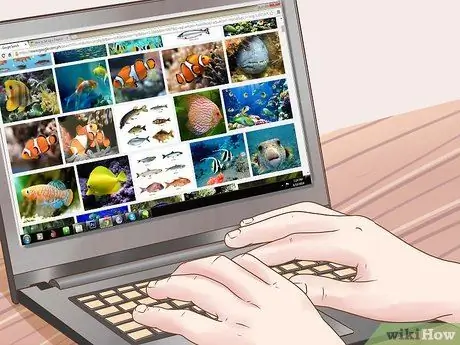
Step 14. Sit back and relax
Pick up a book or surf the internet to decide what kind of fish you want to keep. You will need to wait 48 hours before adding the first fish. Adding too many fish too quickly is a common mistake beginners make, and the tank can be completely damaged.
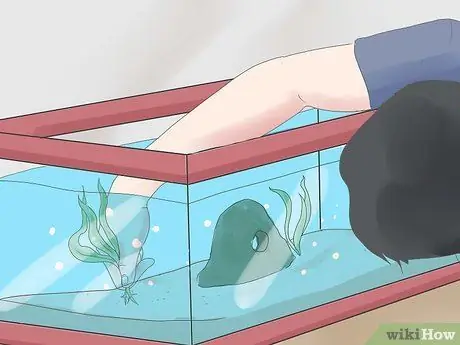
Step 15. Add fish, and understand your new tank
Adding fish is the most fun part of setting up an aquarium tank! Unfortunately, many people make mistakes in this area. Follow the steps below to prevent the fish in the aquarium from dying:
- Leave the tank only filled with water for 48 hours. This helps stabilize the temperature and ensures that the water parameters are safe for the fish. In addition, dust and other parts of the tank will settle to the bottom of the pool.
- Include live plants if you plan to use them. These plants will help start the biological processes that fish need to stay alive in the tank.
- Understand that a tank is not just a cage for your pet fish. The contents of the aquarium is a complete ecosystem. Fish will produce a lot of ammonia through defecation and breathing. Also don't rely too much on the filter because this device only works well when it is full of nitrifying bacteria. These good bacteria are needed to support fish life. Without these bacteria, the ammonia produced by fish settles in the aquarium water and poisons the fish. Your new, clean tank doesn't have this bacteria. If you introduce the fish before the bacteria grow in the tank, your fish may die. Bacteria take 2-6 weeks to multiply! So, there are several ways to cycle your aquarium tank.
- If you know someone who has an aquarium tank that has been in place for more than two months and contains healthy fish, try borrowing filter media from their tank. Keep the media wet until it is put into your tank (to keep the good bacteria alive). Good bacteria will start to multiply in your tank. If you don't have filter media to borrow, buy bacteria that come in a variety of forms at an aquarium fish store.
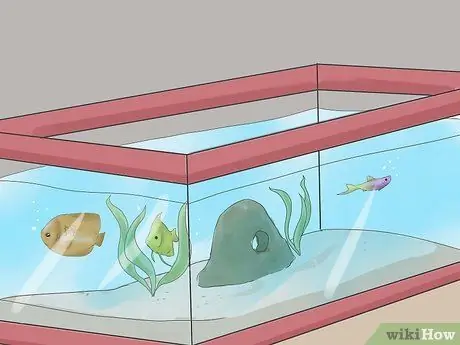
Step 16. Slowly add the fish
If possible, don't add more than 1-2 small fish per 40 liters of water. In the first week, feed a small amount every other day. Remember, if fed too much, the fish can die. If you have a water testing kit, try testing the aquarium water daily, paying special attention to ammonia and nitrite levels. If both levels change drastically to dangerous levels, do a 20-30% water change. Never change more than 30% at this stage (so as not to kill the good bacteria) and always replace with dechlorinated water. After a week, you should be able to add a few more fish, and repeat the process. If there are no disturbances, you should have a stable tank after 4-6 weeks. When it is stable, you can feed the fish regularly and add fish as desired. Remember, the balance of the tank can be temporarily disturbed if you add a large number of fish so sometimes you need to be careful. The number of fish that can be added depends on the size of the fish and their eating habits.
Tips
- Do not forget that you bring live animals into the house and should not be frugal in meeting their needs. Make sure you have the funds and time to take care of the aquarium.
- Before buying fish, do RESEARCH about the species of fish you want to keep. Never buy impulsively. Do your research so you don't buy fish that doesn't suit you.
- When buying fish, always have a tank large enough for the fish when they are fully grown.
- Large tanks are easier to maintain stability than small tanks. Maintenance of tanks with a capacity of less than 40 liters is often too difficult for a beginner. If you are new to it, consider a tank that is at least 20 liters in size unless you want to keep one Siamese fighting fish.
- Don't forget to keep adding good bacteria to the tank every week.
- When adding fish such as Betta splendens, don't mix them with other fish, as fish in schools can bite their fins, and fight with cichlids and other labyrinth fish.
- Before adding ornaments such as gravel and wood to the aquarium, make sure you rinse it thoroughly.
- Goldfish bowls are often not considered ideal for keeping fish. Goldfish can grow up to 20 cm long and live 15 years or more, and require a filtered tank. Goldfish are not for beginners! For one goldfish, you need a 75 liter tank, and an extra 40 liters per additional goldfish!
- Betta fish can be kept with other fish, but do your research to find other types of fish that can live with betta fish.
Warning
- Don't believe what the aquarium fish seller says. In the US, you are very lucky if there is an aquarium fish shop that really understands the field. IN England the situation is somewhat better but only in fish shops with a very good reputation. Check the fish shop before buying!
- Before buying fish, make sure you monitor it for 15 minutes. Look for signs of stress or disease in fish. Don't put sick fish in a new aquarium!
- Cycling becomes very important as your tank and fish grow in size. Do a good cycle!






